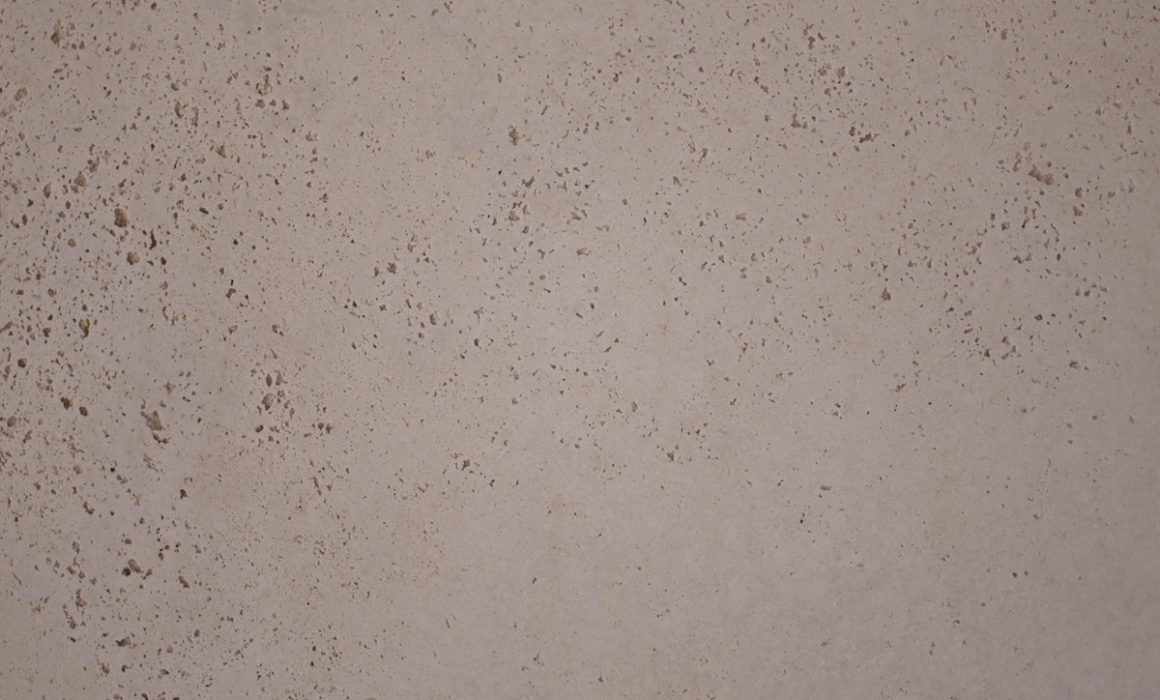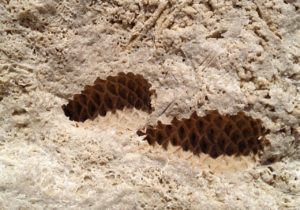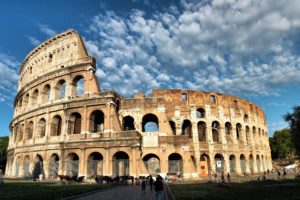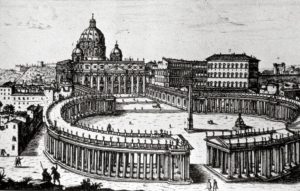The history of Roman Travertine
Travertine is a calcareous rock, of chemical origin, typical of central Italy, among the oldest used in the building world. Particularly famous is the one found near Rome in the area of the Aniene valley between Tivoli and Guidonia.
Lapis tiburtinus – stone from Tivoli – was formed by precipitation of calcium carbonate from water of karstic origin, has good qualities of hardness and mechanical resistance.
The colour of travertine varies according to the area of extraction, in fact, it ranges from milky white to straw yellow to dark dark brown or very dark grey and those coloured red or intense yellow which are mostly esters.
The structure of the travertine is porous, cavernous due to the footprints of the plants incorporated by the rock during the formation, not infrequently in fact there are interesting formations of natural derivation such as pine cones, tree trunks, foliage or sometimes even animals.
The history of travertine begins in the period of ancient Rome, the Greek geographer Strabo (58 B.C. – 23 A.D. ca.), who had stayed in Rome for a long time, recalled (Book V) that it was very easy “by land and river” the transport in this city of lapis tiburtinus, of which it was rich in its buildings. The first quarries resided in an area near Ponte Lucano, in the area of the “Barco”, along the Via Tiburtina, not far from the river Aniene, where they were transported and then embarked to reach Rome.
We have news that initially the Romans, given the simplicity of transport and the hardness of the stone, preferred it and on some occasions substituted it for the much more used tuff as a support for the foundations of the works. In the period that goes from the II to the I century B.C. it was used in the Roman architecture of prestige, both in civil and state buildings but also monumental, therefore it became a stone sought after for its excellent characteristics. In fact, under the Emperor Augustus, Roman Travertine was elevated to the rank of “noble” material, and was used in the most important parts of the city: from the Theatre of Marcellus (13 B.C.-11 B.C.), to the city gate on the Esquiline, even though marble was still used in temples. From the first half of the first century B.C. travertine was also used to make works where marble was used in the past. Because of its spongy and “hollow” nature, it was evident that a travertine column could never approach perfection in the grooves of a marble. Therefore it was necessary to stop at a less “complete” state of work to focus on the overall effect and less on the details.
The most important application of the lapis tiburtinus, in the period of ancient Rome, was the construction of the Flavian Amphitheatre, the Colosseum, a building that represents the maximum expression of Roman architecture as well as the largest amphitheatre ever built in the world able to hold from 50,000 to 87,000 people, where shapes and materials clearly express the characteristics of the Roman Empire, which can be found in the Palatine palaces, in the villa of Emperor Hadrian and in the Baths. After the construction of the Colosseum, the imperial architecture began to set aside a little travertine, preferring other materials more suitable with their chromaticity to the realization of increasingly sumptuous architecture.
During the Middle Ages, the quarries fell into disuse because of the widespread custom of reusing finds, columns of ancient Roman buildings that were literally stripped and destroyed. The travertine, which covered them, was particularly suitable to be detached to make lime with which to build.
In 1656 a new great opportunity for Tiburtinus stone, Pope Alexander VII, commissioned the architect Gian Lorenzo Bernini to rebuilt St. Peter’s Square in Rome. The imposing square is about 340 meters long and embraces St. Peter’s Basilica. After about 11 years of planning and various drawings, the architect gives the colonnade the shape of an ellipse, formed by 284 travertine columns of Doric order and eighty-eight pillars, are arranged in four rows with a diameter gradually increasing from the first row to the fourth and last row. The alignment of the columns is calculated on the radii of the ellipse, the centre of which is made to coincide with a round tile placed on the floor of the square (on both sides of the square). From that precise point the columns appear perfectly aligned so that they appear to be a single row. The Roman Travertine chosen is that of Tivoli, in particular that of the Fosse quarry, because of the light colour and consistency of the stone. On that occasion, a large factory was erected and Casal Bernini is still standing today.
Nowadays, travertine finds great appreciation among architects and interior designers all over the world. Elegance and sobriety are combined in this versatile stone, which expresses a balanced and never vulgar concept of luxury. It is available in different shapes, sizes and finishes, economically affordable and able to satisfy every aesthetic need. Travertine is suitable for both indoor and outdoor use, and can also be used in very humid environments, such as kitchens, bathrooms or outdoors, both as flooring and cladding, and is also suitable for swimming pools, fireplaces or street furniture in general.
Despite its important history, travertine also adapts to environments with a decidedly modern style, precisely because it has many finishes, from polished to polished, from rough to polished to the most modern laser processing.
The new machinery allows quarries and industries to receive and guarantee a production always fast and careful, thus responding to any request from customers, even if the real difference still today is the experience of the workers, a precious treasure in the possession of few.






